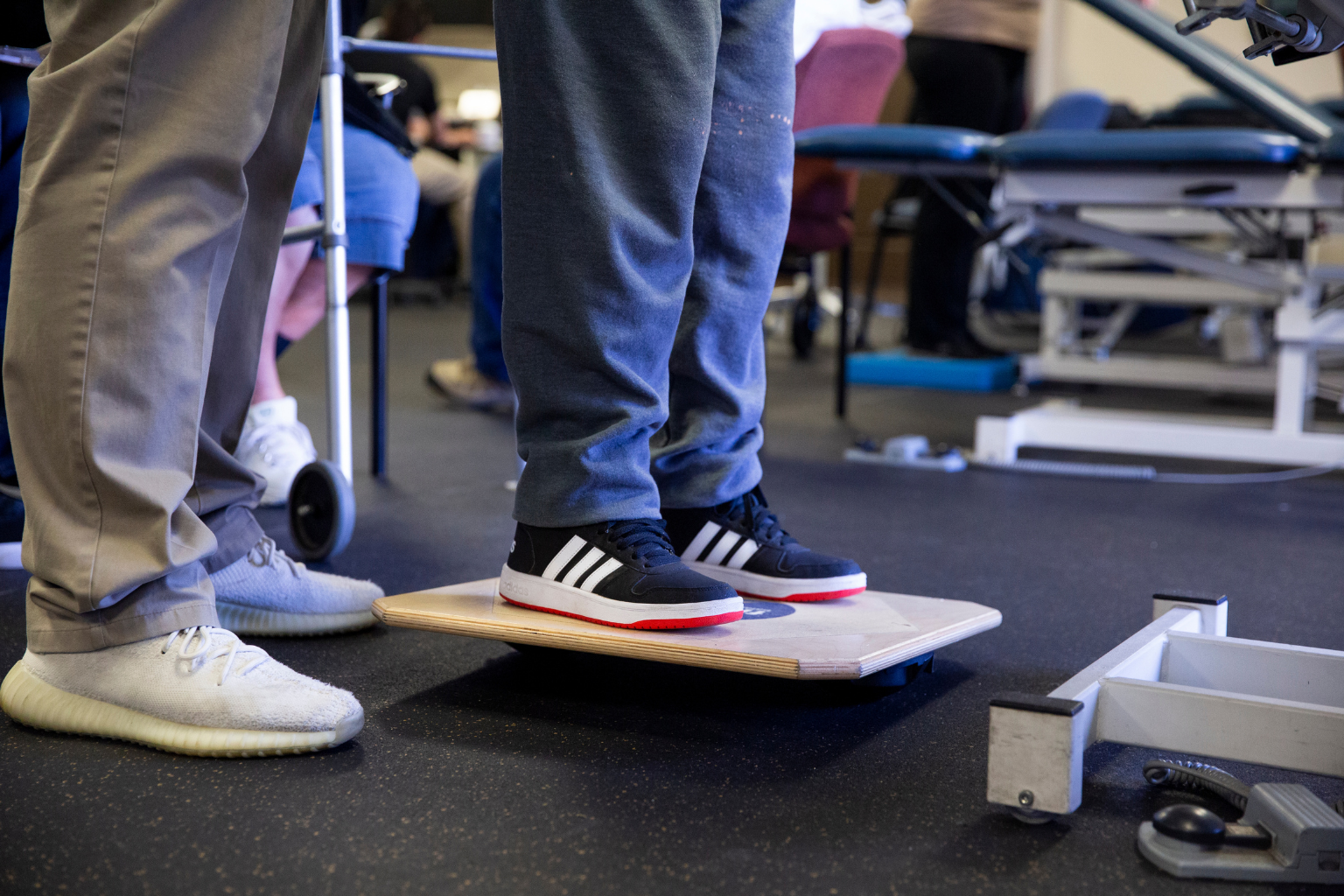
Imagine routinely feeling dizzy, lightheaded, or fatigued with blurred vision whenever you sit up or stand quickly. A bout of confusion sets in, or you feel like you have tunnel vision—like you may faint. It’s a scary feeling that may be a sign of orthostatic hypotension, a condition in which your blood pressure drops significantly when your body shifts to an upright position.
One in four adults aged 65 years or older has a fall each year, with one in five falls resulting in serious injury. Orthostatic hypotension is a common cause of dizziness and imbalance, which could lead to dangerous falls.
There are many potential causes of dizziness and imbalance, so a thorough evaluation is necessary to rule out possible causes and get referrals for treatment as needed.
Our licensed and experienced physical therapists at PRO~PT can help you improve your mobility and safety by reducing or eliminating orthostatic hypotension symptoms. And, as always, our unique programs are personalized to your specific situation.
What is orthostatic hypotension, and how does it work?
Orthostatic hypotension is when a sudden change to a sitting or standing position causes your systolic blood pressure to drop at least 20 mmHg or your diastolic blood pressure to drop at least 10 mmHg.
The sudden blood pressure drop decreases the available blood for your muscles and organs, leading to the following symptoms:
- Dizziness
- Lightheadedness
- Feeling faint
- Headache
- Blurry vision
- Tunnel vision
- Weakness
- Fatigue
- Confusion
These symptoms usually happen during moments when your blood pressure is naturally lower, like during the morning. It can happen while straining with routine activities, from using the bathroom to exercising with static movements or frequent posture changes.
You could feel orthostatic hypotension when you feel anxious or ill, or it could happen after eating large meals with high carbohydrate content, when blood pressure can fall after 15 minutes and drop to a low point after one hour.
Consuming alcohol also leads to decreased blood pressure, impairing the body’s ability to respond appropriately to changes in body position.
Am I high-risk?
Orthostatic hypotension can be caused by or linked to several conditions. You may be at a higher risk if you experience or have experienced:
- High blood pressure
- Dehydration, vomiting, diarrhea, or bleeding
- Diabetes
- Alcoholism
- Prolonged motionless standing
- Cardiovascular conditions such as heart failure or atherosclerosis
- Parkinson’s Disease or other types of dementia
- Anemia
- Certain vitamin deficiencies, such as B12
- Prolonged bed rest
- Certain medications such as diuretics, venodilators, vasodilators, and antidepressants
- Other age-related physiologic changes
I think I may have orthostatic hypotension. What should I do?
Should you experience any symptoms, contact your doctor as soon as possible, detailing all of your symptoms. Make sure to discuss your current medication and whether you need to stop, switch, or reduce the dosage.
As you determine if you have orthostatic hypotension, take these precautions to avoid falls and injury:
- Change your positions gradually. When getting out of bed, first sit up to the side of the bed and then stand up.
- Take your time when getting up from seated positions and ensure you have something sturdy to hold on to when you stand up.
- Try light exercise, such as clenching your hands, pumping your feet up and down, or marching in place for about 30 seconds before changing positions and walking.
- Don’t walk if you feel lightheaded or dizzy.
- Drink six to eight glasses (about 48 ounces) of water each day, unless instructed by your doctor to limit fluid intake.
- Consider drinking 16 ounces of water within two to three minutes. Doing this has been shown to increase blood pressure, peaking about 20 to 40 minutes after ingestion.
- Increase sodium intake up to 10 grams per day.
- Avoid very hot showers or baths and prolonged heat exposure on hot summer days.
- When sleeping, raise your head with extra pillows or have the head of the bed raised with blocks from six to nine inches.
- Consider wearing abdominal binders or high-waisted compression stockings—start with 30-40 mm Hg.
- Choose physical exercises in lying or sitting positions over those in which you hold your breath. Avoid strenuous exercises. However, don’t avoid exercise because that could decondition your body and exacerbate your orthostatic symptoms.
PRO~PT can help you overcome dizziness and imbalance caused by a wide range of conditions with programs personalized for your specific treatment and lifestyle. Contact us today to get started.







